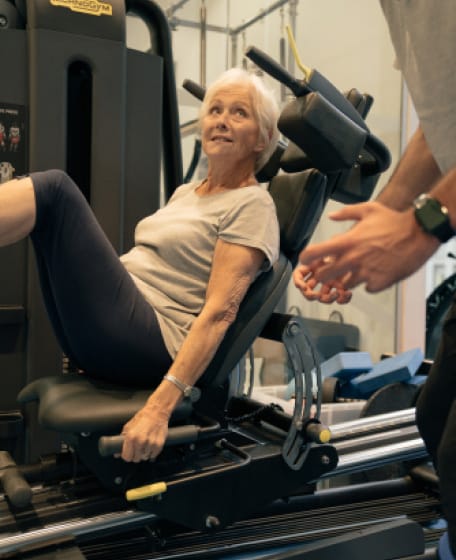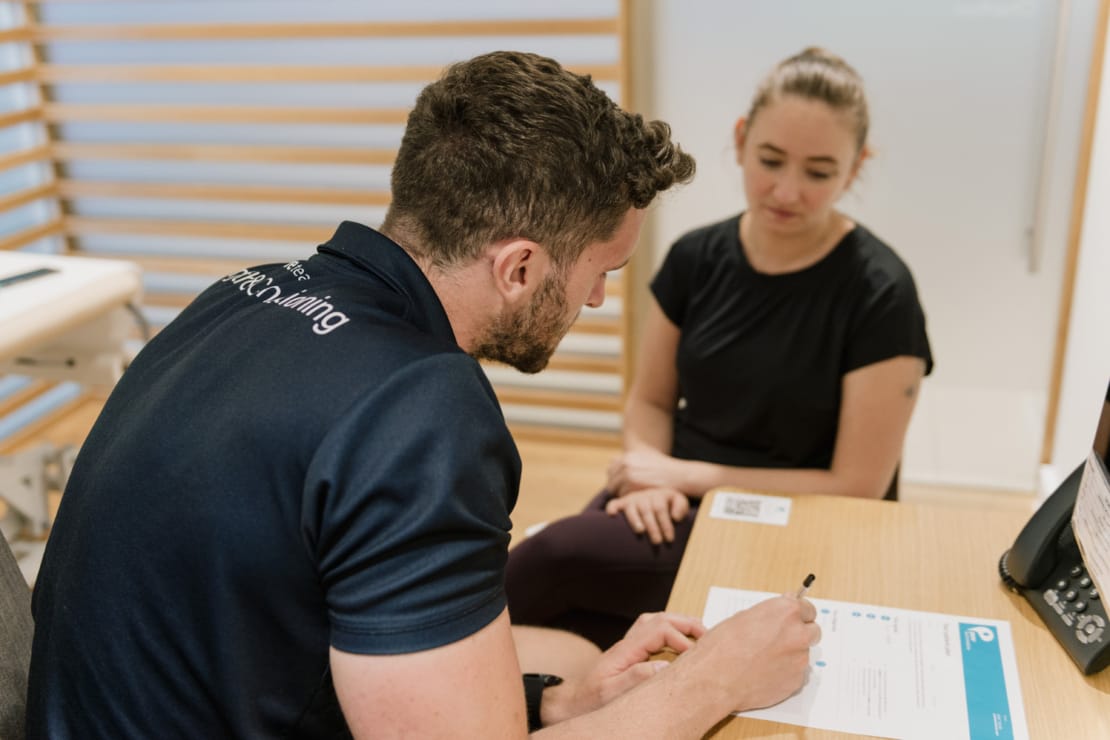5 Tips to Live Well with Chronic Pain & Managing Discomfort

Danny Miller
Osteopath
- 9 August, 2024
- Pain Management
- 4 min read
5 Tips to Live Well with Chronic Pain & Managing Discomfort

We’ve all experienced pain at some point in our lives.
Maybe you’ve broken a bone or sprained a muscle. But for those living with chronic pain, that pain is constant. So, what exactly is chronic pain? And how can you manage it?
What is chronic pain?
Chronic pain is defined as pain that lasts for more than 3 months. An NHS digital survey from 2019 found that the prevalence of chronic pain amongst adults was 34%, and is more common in women (38%) than in men (30%), with the lower back being the most common site of pain.
People who experience chronic pain understandably can find it hard to come to terms with and challenging to explain to others. Living in pain everyday not only takes a physical toll, but it can lead to emotional distress and low mood. You might start to feel down, hopeless, and maybe even depressed. This creates a vicious cycle; as low mood can worsen your pain, and as your pain increases, you start to feel even more down – the cycle goes on.
However, evidence has shown that it is possible to live a fulfilling life alongside persistent pain and chronic health conditions. Let’s find out how!
1. Pace yourself
Living with pain is exhausting. It can be an all-encompassing emotional experience involving catastrophic thinking, repetitive thoughts about a pain experience and concerns over an ability to cope. You might find yourself constantly attempting to understand and make sense of your pain. When the answer does not arrive, it can lead to further despair and a rollercoaster ride of relief and emotional exhaustion.
Chronic pain is also physically exhausting. On a ‘good’ day, when your pain is lower, it can be tempting to do more to make up for the things you couldn’t do on a day when your pain was worse – this takes its toll the next day, causing a flare up of your symptoms.
If this sounds familiar, then the technique of pacing could prove helpful to you. Pacing is the process of taking a break before you need to, regardless of pain levels on that day — this in turn can enable you to build up stamina and limit painful flares over time.
2. Movement is medicine
We all know that everyone needs to move to maintain optimal health and wellbeing. However, this is easier said than done. Exercise isn’t easy for everyone, particularly for those living with persistent pain. It may even feel impossible. The key is to build up your activity levels slowly over time. The support and expertise of an Exercise Physiologist can help you on your way.
Exercise physiologists specialise in helping you to prevent, treat and manage chronic disease or injury with the use of exercise and movement. They will begin by assessing your abilities and breaking down the key barriers to participation. They will then set out a personalised plan to guide you on your way to a more active life.
If you’re unsure what your condition is or why you’re feeling ongoing pain, a specialist in this field can help you correctly diagnose the cause and guide you through how to manage it. In this instance, a Pain Consultant should be your first point of call.
3. The role of nutrition
Although the connection between diet and pain management is not yet fully understood, emerging evidence suggests that a diet rich in fruits, vegetables, and olive oil – like the Mediterranean diet – may help alleviate chronic pain. This potential benefit is attributed to the high polyphenol content, which may have anti-inflammatory properties. Conversely, a Western diet, high in refined carbohydrates, saturated fats, and low in plant-based foods, appears to aggravate chronic pain.
Certain supplements may also be beneficial for specific types of pain. For example, omega-3 or glucosamine supplements may help with osteoarthritis pain, while Vitamin D might provide relief for fibromyalgia symptoms.
To explore how your diet could help manage chronic pain, it’s important to seek support from a qualified professional, such as a dietitian or registered nutritionist, making a plan specifically for you, your body and condition.
4. Visiting an Osteopath
Osteopaths are recognised allied health professionals, which means they can diagnose and treat a wide range of musculoskeletal issues. They use hands-on manual techniques as well as joint mobilisation, soft tissue manipulation and management advice. These methods aim to restore mobility, alleviate pain, and enhance the body’s natural healing processes.
So, how does this help in the management of chronic pain? People with ongoing pain who saw an osteopath reported feeling listened to. They also felt that they encouraged positive health behaviours and an engagement with life.
5. Learn what works for you
When it comes to managing chronic pain, everyone is different. What works for one person, may not necessarily prove helpful for someone else. That’s why individualised support is so important.
Often those experiencing persistent pain become experts in their condition and with the support of others they can understand how their body works, and what management techniques, or exercises are most effective for them. This takes patience, persistence and learning to be compassionate towards ourselves. So, remember to be kind to yourself.
Chronic pain can take the joy from the things you used to love doing. But it doesn’t have to be that way forever. Whilst it might seem impossible at first, with the right support, you can learn how to cope with pain, develop resilience to flare ups and experience enhanced well-being. Remember that you are not alone.

Advice
Over the last 20+ years our experts have helped more than 100,000 patients, but we don’t stop there. We also like to share our knowledge and insight to help people lead healthier lives, and here you will find our extensive library of advice on a variety of topics to help you do the same.
OUR ADVICE HUBS See all Advice Hubs

